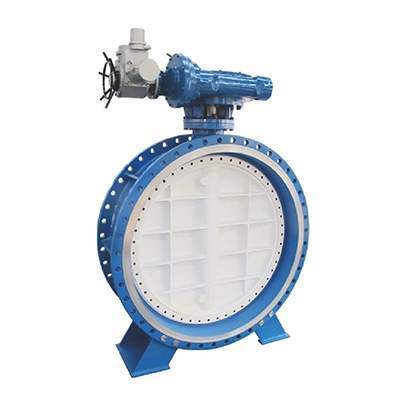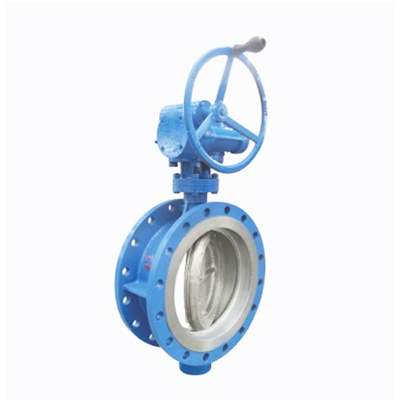Welcome to My Blog!
Before we dive into the content, I’d love for you to join me on my social media platforms where I share more insights, engage with the community, and post updates. Here’s how you can connect with me:
Facebook:https://www.facebook.com/profile.php?id=61563865935136
Now, let’s get started on our journey together. I hope you find the content here insightful, engaging, and valuable.
Introduction

Butterfly valves are essential flow control devices used across a wide range of industries. Understanding butterfly valve dimensions is crucial for proper installation, operation, and maintenance, ensuring efficient and reliable performance. This comprehensive guide provides detailed information about butterfly valve dimensions, including various types, standards, and factors affecting dimensions, empowering engineers and technicians to make informed decisions.
What are Butterfly Valves?
Butterfly valves are quarter-turn rotary valves that use a disc-shaped closure member (butterfly) to regulate flow. The butterfly rotates about an axis perpendicular to the flow direction, controlling the opening and closing of the valve with a simple 90-degree turn. Butterfly valves offer several advantages, including simple design, compact size, low pressure drop, and ease of operation, making them a versatile choice for various applications. Their compact design makes them particularly useful in space-constrained environments.
Types of Butterfly Valves and Their Dimensions
Butterfly valves are available in various types, each with specific design features and dimensions tailored for different applications. The most common types include:
Wafer Type Butterfly Valves
Wafer type butterfly valves are designed to be installed between two flanges using bolts that pass through the valve body. They are compact and lightweight, making them suitable for applications with space constraints and lower pressure requirements. This design simplifies installation and reduces the overall weight of the piping system.
Lug Type Butterfly Valves
Lug type butterfly valves have threaded lugs on the valve body, allowing them to be bolted directly to the flanges without the need for additional bolts. This design simplifies installation and maintenance, as the valve can be easily removed for servicing without disturbing the pipeline. Lug type valves are also suitable for dead-end service.
Flanged Type Butterfly Valves
Flanged type butterfly valves have flanges on both ends, allowing them to be directly connected to the pipeline. They offer a more robust connection and are suitable for higher pressure applications where a secure and leak-free seal is critical. This type of valve is often preferred for more demanding applications.
Other Types of Butterfly Valves
Beyond the common types, specialized butterfly valves cater to specific needs:
- Double Flanged Butterfly Valves: These valves have flanges on both ends and are used for connecting to pipelines with different flange standards, providing flexibility in system design.
- Welded End Butterfly Valves: These valves are welded directly to the pipeline, providing a leak-free connection and enhancing system integrity, often used in critical applications.
- High Performance Butterfly Valves: These valves are designed for high pressure and temperature applications, incorporating specialized seals and materials to withstand extreme conditions. They offer enhanced performance and reliability in demanding environments.
Understanding Butterfly Valve Dimensions
Butterfly valve dimensions vary depending on the type, size, and pressure rating of the valve. Key dimensions to consider include:
Nominal Size (DN/NPS)
The nominal size refers to the approximate inside diameter of the valve. It is typically expressed in millimeters (DN) or inches (NPS) and serves as a general indicator of the valve’s size and flow capacity. However, the actual internal diameter may vary slightly.
Face-to-Face Dimension
The face-to-face dimension is the distance between the two flange faces of the valve. It is crucial for ensuring proper fit within the pipeline and avoiding interference with other components. This dimension is standardized to ensure interchangeability.
Overall Length
The overall length refers to the total length of the valve, including the body, disc, and stem. This dimension is important for space planning and ensuring adequate clearance for installation and operation.
Disc Diameter
The disc diameter is the diameter of the butterfly disc. It directly determines the flow capacity of the valve; a larger disc allows for greater flow.
Stem Diameter
The stem diameter is the diameter of the valve stem, which connects the disc to the actuator. A robust stem is essential for transmitting torque and ensuring reliable valve operation.
Actuator Dimensions
The actuator dimensions depend on the type and size of the actuator used to operate the valve. This includes manual handwheels, pneumatic actuators, and electric actuators. Consideration of these dimensions is crucial for proper mounting and operation.
Butterfly Valve Dimensions Standards
Several international standards govern butterfly valve dimensions, ensuring interchangeability and compatibility between valves from different manufacturers. Some common standards include:
- ASME B16.5: This standard covers steel pipe flanges and flanged fittings, including dimensional requirements and pressure ratings.
- EN 558: This European standard specifies face-to-face and center-to-face dimensions for valves, promoting standardization within European markets.
- ISO 5752: This international standard covers face-to-face and center-to-face dimensions for valves, facilitating global trade and interoperability.
Factors Affecting Butterfly Valve Dimensions
Several factors can affect butterfly valve dimensions, requiring careful consideration during selection:
Pressure Rating
Higher pressure ratings typically require larger valve bodies and discs to withstand the increased pressure. Materials and construction methods also play a critical role in pressure containment.
Temperature
Extreme temperatures can affect the materials used in the valve, which may impact dimensions due to thermal expansion or contraction. Specialized materials and designs may be required for extreme temperature service.
Application
The specific application of the valve can influence dimensions. For example, valves used in corrosive environments may require special materials or coatings that affect dimensions. Specific industry requirements may also dictate certain dimensional standards.
Design
Different valve designs may have varying dimensions for the same nominal size and pressure rating. Manufacturers may offer different body styles and disc configurations, which impact overall dimensions.
How to Select the Right Butterfly Valve Dimensions
Selecting the right butterfly valve dimensions is crucial for optimal performance and compatibility within the piping system. Consider the following factors:
Flow Requirements
Determine the required flow rate and pressure drop for the application. This will help determine the appropriate valve size and disc diameter.
Pipe Size
Ensure the valve size matches the pipe size for proper connection and to avoid flow restrictions. Mismatched pipe and valve sizes can lead to inefficient system operation.
Pressure and Temperature
Select a valve with a pressure and temperature rating suitable for the operating conditions. Exceeding these ratings can lead to valve failure and potential safety hazards.
Application
Consider the specific application and any special requirements, such as material compatibility or actuation type. For example, corrosive applications require specialized materials.
Standards
Adhere to relevant industry standards and specifications to ensure compliance and interoperability. This is particularly important in regulated industries.
Installation and Maintenance of Butterfly Valves

Proper installation and maintenance are essential for ensuring the longevity and reliability of butterfly valves. Follow these guidelines:
Installation
- Ensure the pipeline is clean and free of debris before installing the valve. Foreign material can damage the valve seat and disc.
- Use appropriate gaskets and bolts for installation to ensure a leak-free seal. Incorrect gaskets can lead to leaks and premature failure.
- Tighten bolts evenly to prevent distortion of the valve body, which can affect disc alignment and sealing. Uneven tightening can also damage the flanges.
- Verify proper alignment and operation after installation to confirm correct functionality. Check for leaks and ensure smooth valve operation.
Maintenance
- Regularly inspect the valve for leaks or damage, including the disc, seat, and stem. Early detection of problems can prevent more serious issues.
- Lubricate moving parts as needed to ensure smooth operation and prevent wear. Use the manufacturer’s recommended lubricant.
- Replace worn or damaged components promptly to maintain valve integrity and prevent failures. Worn seals or discs can lead to leaks and reduced performance.
- Follow the manufacturer’s maintenance instructions for specific recommendations and schedules. This will help maximize the valve’s lifespan.
Conclusion
Understanding butterfly valve dimensions is crucial for proper selection, installation, and maintenance. This comprehensive guide provides detailed information about various types, standards, factors affecting dimensions, and troubleshooting tips. By following the guidelines outlined in this guide, you can ensure optimal performance and longevity of your butterfly valves.
FAQ
What is the difference between a wafer and lug type butterfly valve?
Wafer type butterfly valves are installed between two flanges using bolts that pass through the valve body, while lug type butterfly valves have threaded lugs on the valve body for direct bolting to the flanges.
How do I determine the correct size of butterfly valve?
Consider the flow requirements, pipe size, pressure and temperature rating, and application requirements to select the appropriate butterfly valve size.
How do I maintain a butterfly valve?
Regularly inspect the valve for leaks or damage, lubricate moving parts as needed, and replace worn or damaged components.
